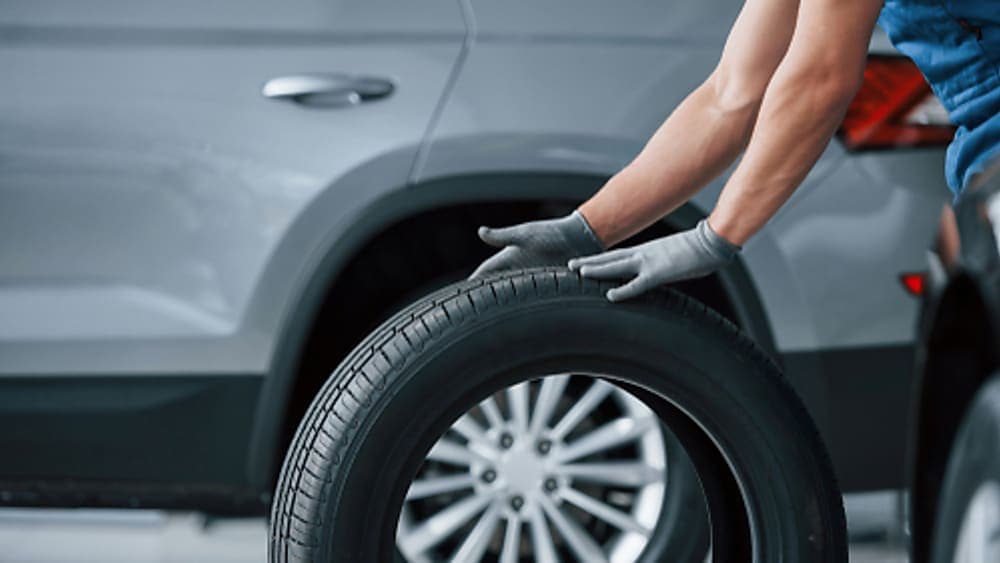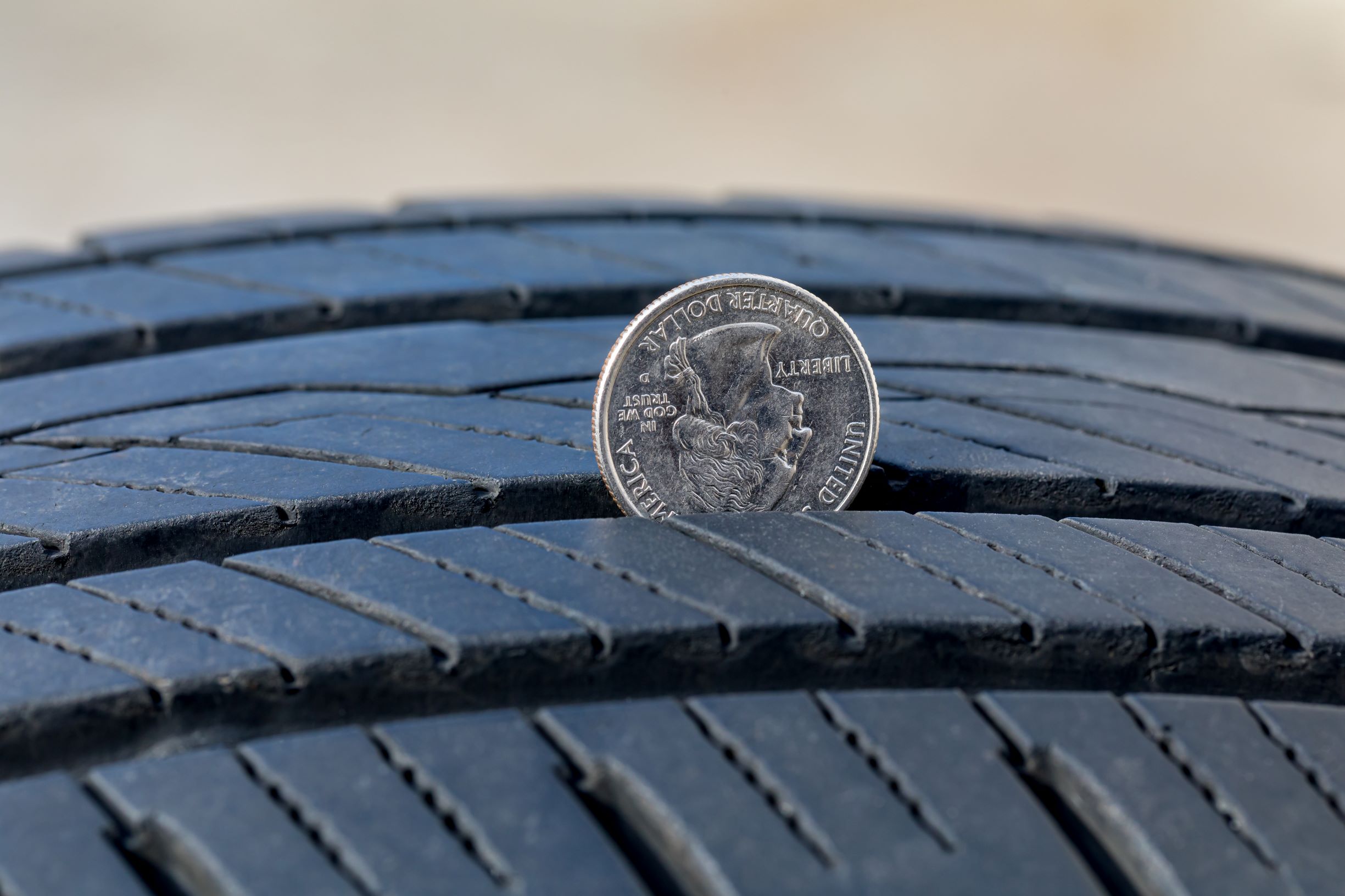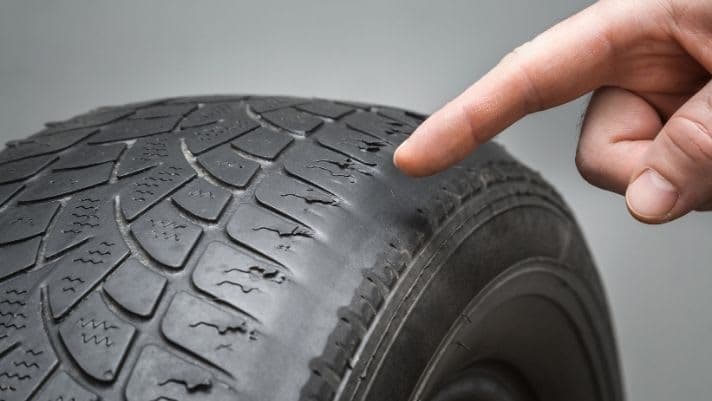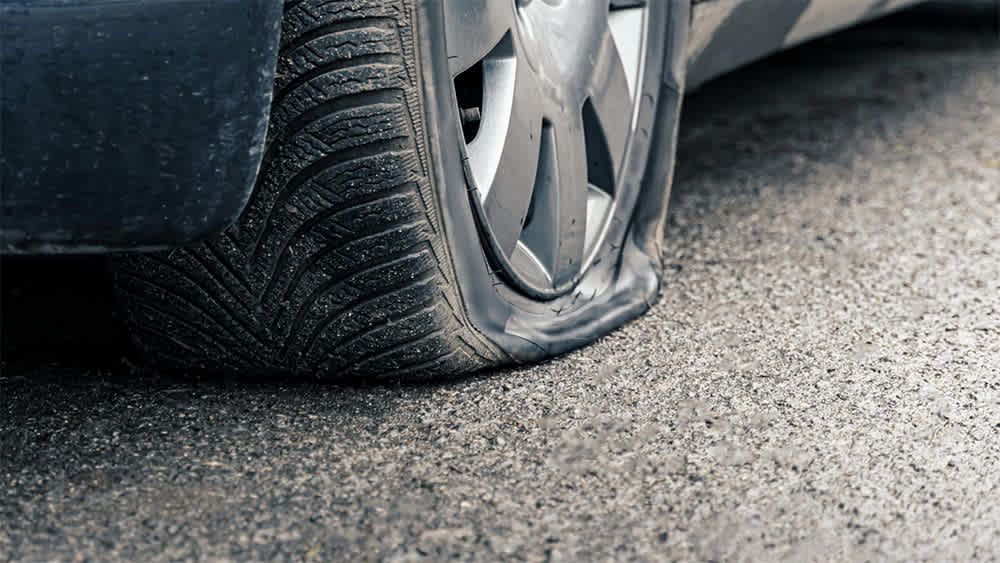Tire maintenance & safety
Understanding when to replace tires is critical

Free shipping
Best price guarantee
Special pricing
Financing with Resolve
Easy returns
Tire maintenance & safety


Your vehicle's tires are the only point of contact with the road, making them crucial for safety and performance. However, tires don't last forever; they wear down over time due to factors like driving habits, road conditions, and age.
Knowing when to replace your tires is essential for maintaining optimal traction, handling, and overall safety. Driving on worn-out tires can lead to decreased control, longer stopping distances, and an increased risk of accidents, especially in adverse weather conditions.
In this article, we'll explore the key indicators that signal it's time for new tires. By understanding these signs and regularly inspecting your tires, you can ensure your vehicle remains safe and reliable on the road.

Tire tread depth is a critical factor in determining when it's time to replace your tires. The tread is the part of the tire that comes into contact with the road surface, providing traction and handling. As tires wear down, the tread depth decreases, reducing the tire's ability to grip the road effectively.
The penny test is a simple way to check if your tires have enough tread. Place a penny into your tire's tread groove with Lincoln's head upside down and facing you. If you can see all of Lincoln's head, your tread depth is less than 2/32 inch—the legal minimum in most states—and it's time to replace your tires.
For a more precise measurement, use a tread depth gauge. These tools provide an accurate reading of your tire's remaining tread, allowing you to monitor wear over time. Proper tread depth is crucial for maintaining safe traction and handling, especially in wet conditions.
Tires with low tread depth have reduced traction, particularly in wet or slippery conditions. This can lead to a higher risk of hydroplaning, where the tire loses contact with the road surface and rides on a thin layer of water. Hydroplaning can cause a loss of steering control and increase stopping distances, making it more difficult to avoid accidents.
Insufficient tread can also lead to poor handling, as the tire's ability to grip the road during cornering and maneuvering is compromised. This can make it harder to control your vehicle safely, particularly in emergency situations or on winding roads.
To ensure your safety and the safety of others on the road, it's essential to replace your tires when the tread depth reaches the minimum legal limit or the level recommended by your tire manufacturer. Regularly checking your tire tread and staying informed about the signs of wear can help you make timely decisions about tire replacement.
At SimpleTire, we understand the importance of tire safety and are committed to providing our customers with the knowledge and resources they need to make informed decisions about their tires. By prioritizing tire maintenance and replacing tires when necessary, you can enjoy a safer, more comfortable driving experience.

Assessing visible damage on your tires is crucial for maintaining safety and preventing unexpected failures. Conduct regular checks to identify any signs of cracks, cuts, or bulges on the sidewalls. These indicators can point to internal issues that may compromise the tire’s integrity and safety.
Cracks appearing on the sidewalls often signal that the tire material is degrading, possibly due to prolonged exposure to UV rays or extreme temperatures. Over time, this can weaken the tire's ability to hold air and maintain its structural integrity. Regular evaluations of your tires for such cracks can help prevent potential air loss and ensure your tires function effectively.
Bulges or blisters on the sidewalls suggest that the internal structure of the tire has been compromised, often due to hitting obstacles like potholes. A bulge indicates a weak spot in the tire where air has seeped into its inner layers, increasing the risk of a blowout. When you notice a bulge, consult a professional to assess the severity and decide if a replacement is necessary.
Cuts can occur from sharp objects on the road, leading to punctures that may be repairable if not too deep. However, significant cuts that affect the tire’s layers need immediate attention and possibly replacement to maintain safety. Regularly inspecting for any visible damage helps address issues early, ensuring your tires remain reliable on the road.
Tires gradually deteriorate over time due to environmental exposure, even if their tread looks fine. Factors like heat, sunlight, and humidity contribute to the breakdown of rubber compounds. This aging process can undermine the tire's structural strength, affecting its ability to provide safe performance. As tires age, the material can become less flexible, leading to potential issues that might not be immediately visible.
The hardening of rubber over time makes tires more susceptible to cracks, impacting their grip and handling. This change reduces traction, especially in wet or slippery conditions. Understanding how tires age allows you to identify when they might need replacement to maintain vehicle safety.
To find out a tire's age, look for the DOT code on its sidewall. The final four digits of this code indicate the tire's production week and year. For example, a code ending in "2319" shows the tire was made in the 23rd week of 2019.
Replacing tires that are six to ten years old is generally recommended, regardless of their tread condition. This guideline helps ensure that tires remain safe and reliable, even if they appear outwardly fine. Regularly checking the DOT code allows you to monitor your tires' age, enabling timely replacements before they compromise safety.

Tires with inconsistent wear patterns can signal deeper issues within your vehicle's mechanics. When you notice certain areas of the tire wearing faster—like bald spots or more wear on one side—this often points to alignment or suspension problems, or issues with tire inflation. Such uneven wear not only reduces the lifespan of your tires but can also impair handling and safety.
Addressing these irregular wear patterns involves pinpointing the underlying cause. Misalignment can lead to uneven tire wear; correcting it requires precise adjustment of the wheel angles to meet manufacturer specifications. Ensuring proper tire inflation is also key, as incorrect pressure can result in uneven weight distribution and accelerated wear. Regular tire rotation can further help in balancing wear patterns across all tires.
Experiencing vibrations while driving can indicate an issue with your tires. These vibrations, felt through the steering wheel or seat, could suggest that your tires are not properly balanced or have internal damage. Such conditions can affect both vehicle stability and comfort, necessitating timely attention.
When tires are unbalanced, the weight around the tire and wheel assembly is uneven, which causes vibrations, especially at higher speeds. Balancing your tires involves redistributing the weight around the wheel to ensure a smooth rotation, eliminating vibrations and promoting even wear. Internal tire issues, such as belt shifts or separations, often result from impacts with road hazards and need immediate inspection by a professional. A thorough diagnosis can determine if repairs or replacements are necessary to restore optimal vehicle performance and safety.

Tires that often lose air pressure can signal underlying problems needing immediate attention. Persistent low pressure impacts fuel efficiency and accelerates wear, posing safety risks. Identifying and addressing the cause helps maintain tire effectiveness and reliability.
Various factors can contribute to air pressure loss in tires. Understanding these causes assists in effectively diagnosing and resolving the issue:
If a tire consistently loses air, a professional inspection is necessary. This examination can identify whether the leak is due to a puncture, valve stem problem, or bead sealing issue. Prompt repairs or replacements prevent further complications and preserve tire performance.
Regularly checking tire pressure and addressing any issues ensures optimal tire function. Keeping tires inflated to the recommended pressure enhances safety and handling while extending tire lifespan. Proper inflation reduces rolling resistance, boosting fuel efficiency and minimizing wear.

Replacing all four tires simultaneously is crucial for maintaining consistent performance and safety. This practice ensures that tread depth, size, and composition remain uniform, which is vital for balanced handling and optimal traction during various driving conditions. Keeping tires matched helps prevent discrepancies in grip and response.
Differences in tread patterns or wear levels can affect vehicle stability and control, leading to uneven traction that impacts braking and cornering. This becomes particularly significant in adverse weather, where consistent tire performance is key to maintaining control. By replacing all four tires together, you promote a smoother, safer driving experience.
When replacing only one or two tires, it is essential to select ones that match the existing tires in size, load capacity, and speed rating. This helps maintain the vehicle's balance and handling characteristics. New tires should be installed on the rear axle to enhance stability and reduce the risk of oversteer, especially in wet conditions where traction is critical.
At SimpleTire, we understand the importance of maintaining your tires for a safe and comfortable driving experience. By regularly inspecting your tires and knowing when to replace them, you can ensure optimal performance and peace of mind on the road. When it's time for new tires, shop for tires online with us to find the best deals and enjoy a hassle-free buying process.
Search By